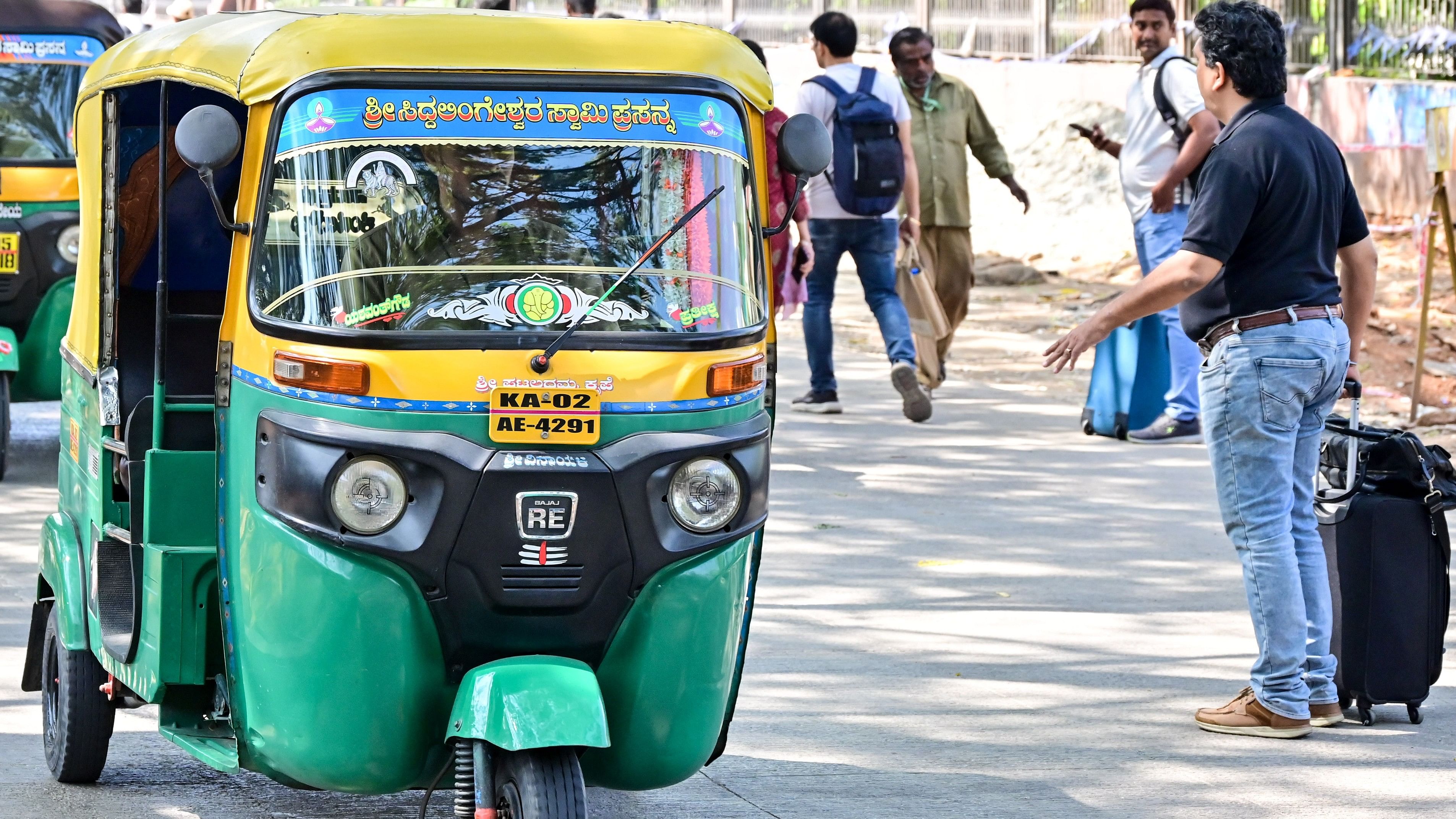
About autorickshaw drivers, the less said, the better.
Credit: DH Photo
For Bengalureans, autorickshaws have always been an integral part of local folklore and culture. I grew up waiting hours for them to appear, travelling in the direction the driver wanted to go, and complaining about them without recourse. Today’s Bengaluru autorickshaw, with its auto-metre retained as a mere ornament, is forcing a shift towards ride-hailing apps, leading to a steady decline in Bengaluru’s traditional auto-rickshaw culture.
About autorickshaw drivers, the less said, the better. Very recently, a 28-year-old autorickshaw driver attempted to run over a traffic cop trying to stop him from driving on the wrong side, threatening to kill the cop if taken to a police station. They are infamous for refusing to go by the metre and demanding excess fares during peak hours or in busy areas. They regularly overcharge customers unfamiliar with local fares and routes. Traffic violations and ignoring traffic rules apart, they are quick to organise protests over fuel prices, licencing regulations, or fare structures.
So the surge in the expansion of autorickshaw aggregators that Bengaluru is currently witnessing should be welcome? With Uber and Ola dominating this space, Namma Yatri and Rapido have new differentiators up their sleeves. While Uber and Ola facilitate tipping auto drivers post-ride, Rapido introduced extra charges for basic ‘hygiene factors’ such as a ‘Tip to Get Auto’ feature. (If you keep trying to book an auto at base fare for hours without luck, you can add a pre-ride tip in advance and bag an auto pronto on your first try!) Or an ‘Auto Plus’ feature, a guarantee to book rides without the threat of cancellations, where an auto driver, grandly called the captain, is assigned within five minutes of booking.
Namma Yatri is not a typical app aggregator but a software-as-a-service (SaaS) technology connecting direct-to-drivers. Money paid by a customer goes directly to the auto driver without any accruing commission. Too good to last, rumblings about Namma Yatri’s payment structure have started surfacing with the introduction of a subscription model for drivers with the levy of a subscription fee. Users have different concerns: a long time to load, a slow interface, not finding autos in the vicinity, failure while booking, few payment options, and no driver confirmation of rides even after long waits make the app seem like a work in progress. Another niche mobility seller app, MetroMitra, that operates within the Open Network for Digital Commerce (ONDC) network and is meant primarily to provide last-mile connectivity from Bengaluru’s Namma Metro stations, has been launched too.
What about the exorbitant fares commuters now pay for autorickshaw services? The apps and aggregators have already found workarounds to derive extra income even when prohibited from charging fares exceeding those mandated by the Karnataka High Court. Tips to get autos, paying surcharges for autos without cancellation, and charges for arriving at customer doorsteps are typical gimmicks employed to exceed the prescribed fares. The State Transport Authority has already observed Rapido and Namma Yatri charge more than the court-mandated minimum fare for autorickshaw services. While Ola and Uber adhere to the prescribed fares, they collect commissions through their aggregator apps, another reason for drivers to harass customers to cancel the ride on the app and pay the driver directly and pocket the
commission.
All these incomprehensible changes in the transportation landscape for today’s Bengaluru auto commuter have reduced the availability of autorickshaws, with most auto drivers operating multiple apps and picking up rides wherever they make the most money, leaving commuters with a preference for traditional autorickshaws stranded, waiting, and facing selective refusals for short-distance trips or driver-perceived unprofitable destinations. They must bear with price surges during peak hours, being at the whims of drivers during times of high demand, and even more expensive rides when compared to regular fares. While convenience, safety, transparency in pricing, and other potential benefits of the apps get swamped in greed and apathy, the drivers remain obsessed with commissions, aligned typically into two mutually antagonistic camps: those not on any app-based service and those who are.
Hopefully, this impact on autorickshaw services is part of an ongoing transformation in urban transportation and will be short-lived. As a Bengaluru autorickshaw commuter, with a government effective when it keeps away and does not interfere and the police preoccupied with other important issues, I am left to my own resources. Required to commute, I activate multiple apps, wait and wait for an autorickshaw, feel obligated to tip and bid for ‘Plus’ features, grin and put up with several cancellations, and god-willingly land up with one autorickshaw driver willing to oblige me and take me to my destination!
(The writer is former Executive Director and Member, Board of Directors, BEML)